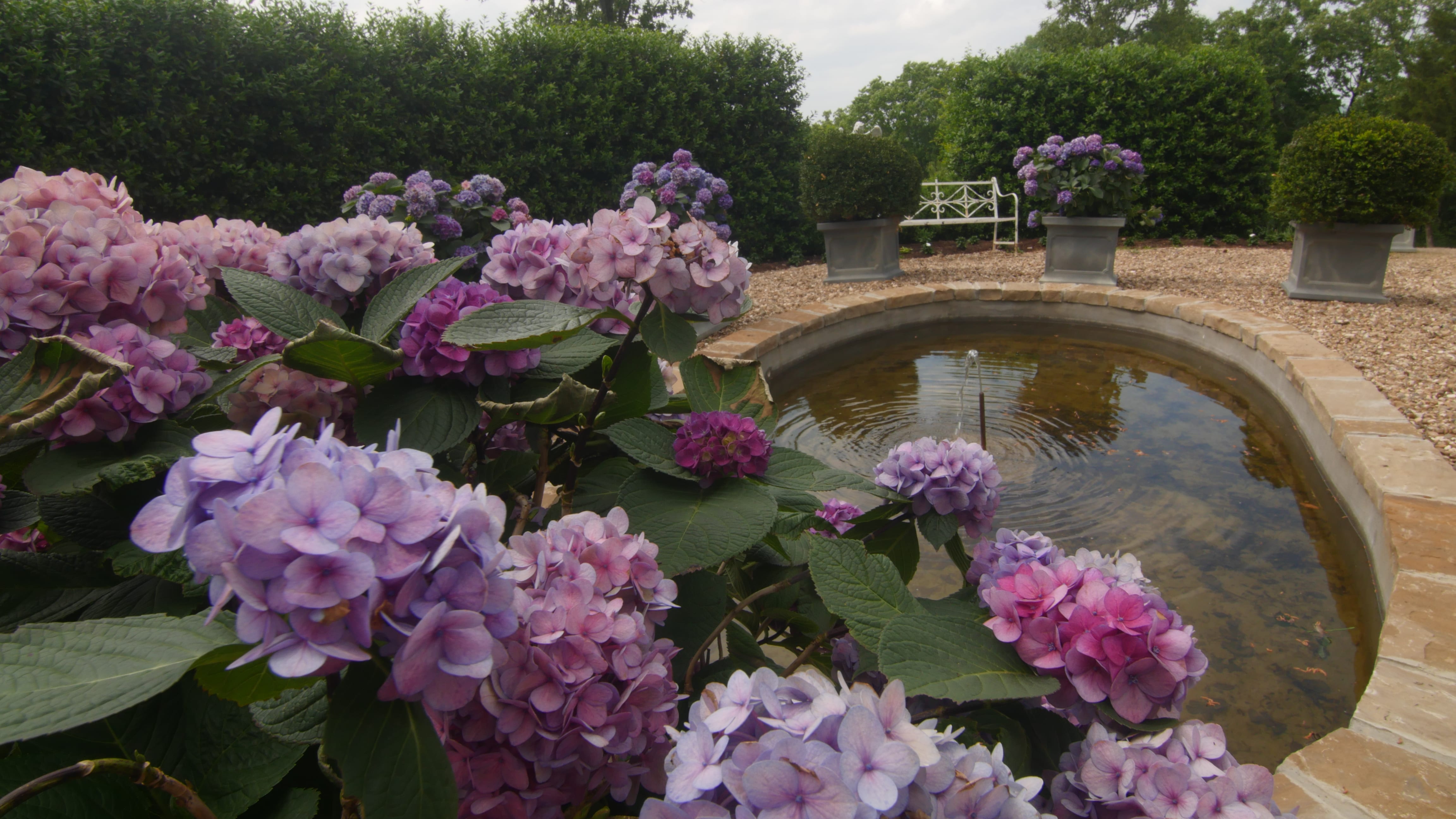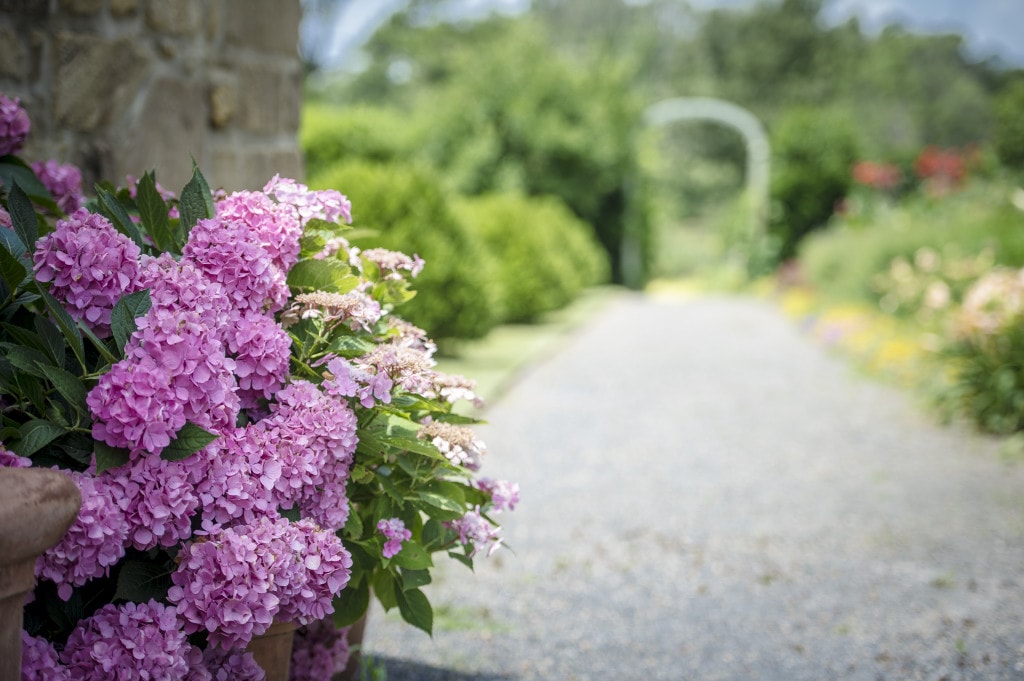How many of you remember the part of Walt Disney’s Sleeping Beauty when the fairy godmothers fight over whether Sleeping Beauty’s ball gown should be pink or blue? I think of that scene every time the old-fashioned mophead hydrangeas (Hydrangea macrophylla) burst into bloom in June. The colors are so rich they are the stuff of magic.
It’s not a fairy godmother that determines whether this hydrangea’s blooms are pink or blue, it is aluminum. Keep in mind that, for certain varieties of hydrangea, the color cannot be manipulated. PeeGee, oakleaf, and Annabelle, for example, produce white and cream flowers. Adjusting the pH level of the soil won’t have an impact on the color of those flowers.

For Hydrangea macrophylla, lots of aluminum makes for blue flowers, lack of aluminum and the blooms will be pink. You’ll want to start out by performing a simple soil pH test. The pH of the soil determines how much aluminum H. macrophylla can absorb.
Alkaline/sweet soils (pH of 6.0 to 6.2) = pink hydrangea blooms
Neutral soils (pH of 5.5 to 6.5) = purple blooms
Acidic soils (pH of 5.5 and lower) = blue blooms
If you are starting out with alkaline soil and trying to get blue hydrangeas, or vice versa, note that it’s going to take a while, usually a full season to see a significant change in color. If you’re planting your hydrangeas in your garden and want to tweak the soil, make sure that the other plants around the hydrangeas can tolerate the adjustments in acidity as well.

To go from pink to blue, you’ll need to make the soil more acidic. Amend the soil with pine needles, coffee grounds, and/or aluminum sulfate. Add garden lime to the soil for pink blooms.
If you are dead set on your hydrangea being pink or blue, grow it in a container where you can easily control the soil pH.








